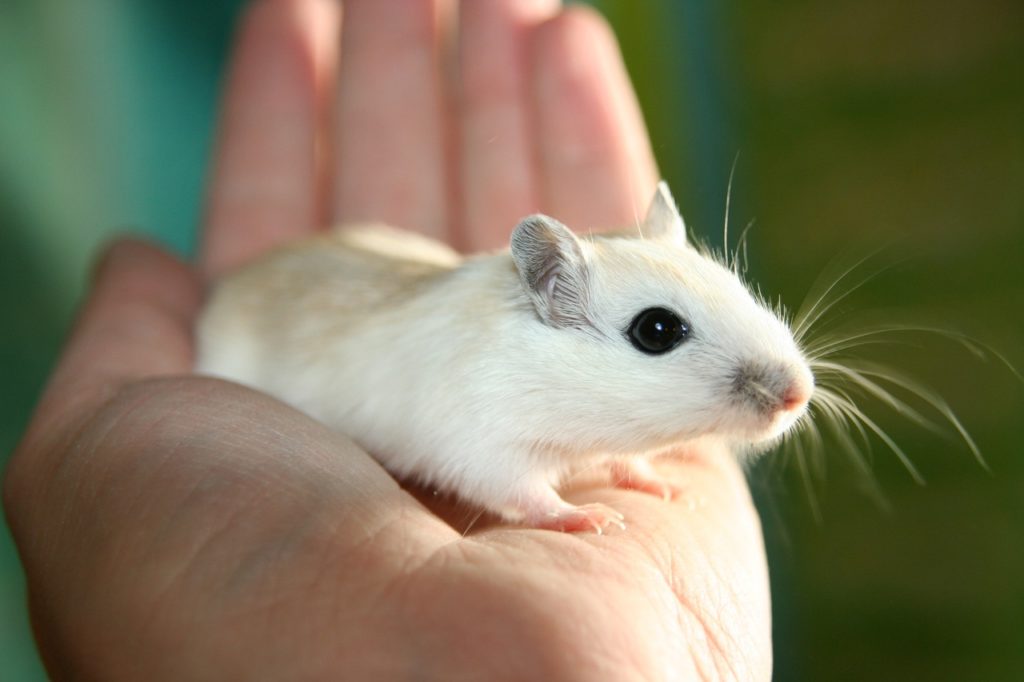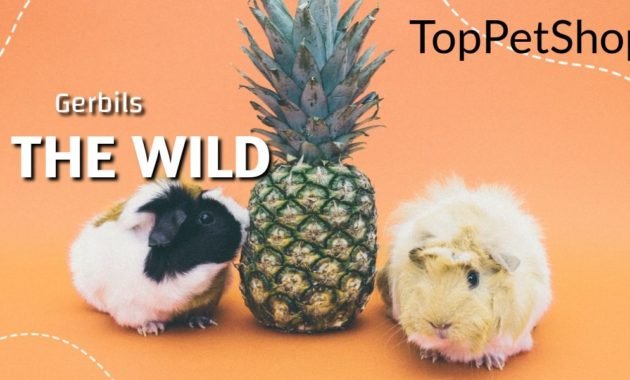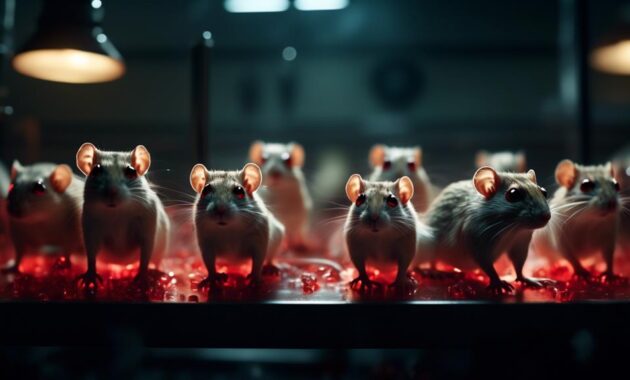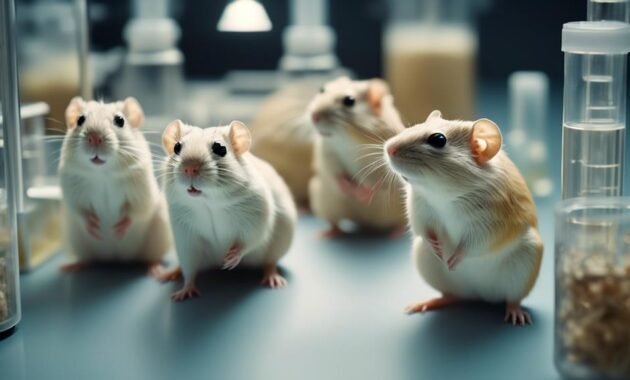
The Shaw's jird, a small rodent native to North Africa, is a fascinating species known for its remarkable resilience in the face of challenging environments. With its ability to withstand dehydration and construct burrows for protection, the Shaw's jird has adapted well to the arid landscapes of the region.
However, this tenacious creature is now confronted with a range of threats that jeopardize its survival. In this discussion, we will explore the behavior, diet, and reproduction of the Shaw's jird while shedding light on its conservation status.
Additionally, we will delve into the potential dangers posed by habitat loss, climate change, and desertification, leaving the reader eager to uncover the future of this remarkable rodent.
Key Takeaways
- Shaw's jird is a species of rodent native to North Africa and is well-adapted to arid environments.
- They are social animals that live in colonies and primarily feed on plant materials.
- Shaw's jirds have a short reproductive cycle, with breeding occurring throughout the year.
- While currently listed as a species of 'Least Concern', habitat loss due to human activities and climate change pose potential threats to their population.
Classification and Description

Shaw's jird, scientifically known as Meriones shawi, is a small rodent belonging to the family Muridae and the subgenus Pallasiomys. This species was first described by Georges Louis Duvernoy in 1842.
Shaw's jird is characterized by its small size, with a body length ranging from 10 to 12 cm. Native to North Africa, specifically Algeria, Morocco, and Tunisia, this rodent prefers semi-arid habitats such as steppes and deserts.
Shaw's jirds are well-adapted to the arid environment, displaying the ability to withstand dehydration. They construct burrows in sandy soil for shelter and protection.
These rodents are primarily nocturnal and social, living in colonies consisting of several individuals. Shaw's jirds are herbivorous, consuming seeds, grasses, leaves, and roots. They possess specialized cheek pouches to transport food back to their burrows.
Distribution and Habitat

Native to North Africa, specifically Algeria, Morocco, and Tunisia, Shaw's jirds prefer semi-arid habitats such as steppes and deserts. These rodents are well-adapted to the arid environment, with the ability to withstand dehydration.
They are often found in lowland regions where sandy soil is prevalent, as they dig burrows for shelter and protection. Shaw's jirds have a wide distribution within their native range, but their habitat is susceptible to threats.
Human activities, including agriculture and urbanization, contribute to habitat loss. Additionally, climate change and desertification pose further risks to their habitat. It is essential to conduct ongoing research and monitoring to assess the long-term conservation status of Shaw's jird and implement measures to mitigate these threats.
Behavior and Diet

Shaw's jirds exhibit distinct behavior patterns and have a specialized herbivorous diet. These rodents are primarily nocturnal, being most active during the night. They are social animals and live in colonies, consisting of several individuals.
Shaw's jirds are herbivorous, feeding on a variety of plant materials. Their diet includes seeds, grasses, leaves, and roots. To efficiently gather food, Shaw's jirds have specialized cheek pouches that allow them to carry food back to their burrows. This behavior helps them store food for times when resources are scarce.
Reproduction and Life Cycle

The reproductive cycle of Shaw's jird is relatively short, with breeding occurring throughout the year. This allows for a rapid population growth and adaptation to changing environmental conditions.
Here are three key points about the reproduction and life cycle of Shaw's jird:
- Gestation period: Females have a gestation period of approximately 21-25 days, which is relatively short compared to other rodents. This allows for quick reproduction and ensures the survival of the species in their harsh desert habitat.
- Litter size: A typical litter of Shaw's jird consists of 4-6 pups. This moderate litter size ensures that there is enough parental care and resources available to support the growth and development of the young.
- Sexual maturity: Shaw's jirds become sexually mature at around 2-3 months of age. This early sexual maturity allows for rapid population growth and ensures the continuation of the species in their challenging desert environment.
Conservation Status
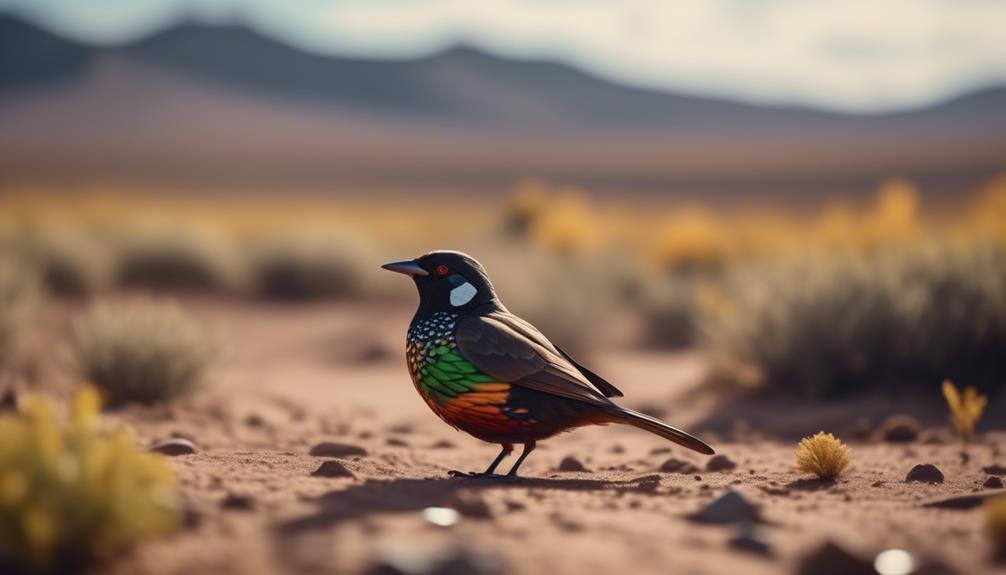
With the understanding of Shaw's jird's reproductive cycle, it is crucial to now examine its conservation status in order to determine the long-term prospects for this resilient rodent.
Currently, Shaw's jird is listed as a species of 'Least Concern' on the IUCN Red List, indicating that its population is considered stable.
However, there are potential threats that could impact its conservation status. Habitat loss due to human activities, such as agriculture and urbanization, poses a significant risk to these rodents.
Additionally, climate change and desertification are also factors that can negatively affect their habitat.
It is essential to conduct further research and monitoring to assess the long-term conservation status of Shaw's jird and implement appropriate conservation measures to ensure the survival of this resilient species in the face of these threats.
Threats to Shaw's Jird

A resilient rodent such as Shaw's jird faces various threats that could potentially impact its long-term survival. These threats include:
- Habitat loss: Due to human activities such as agriculture and urbanization, the natural habitat of Shaw's jird is being destroyed. As their habitat diminishes, the rodents are left with limited resources and shelter.
- Climate change: The changing climate and desertification have a significant impact on the arid environment where Shaw's jird thrives. Extreme weather events, prolonged droughts, and shifts in vegetation patterns can disrupt their food availability and overall habitat suitability.
- Predation: Shaw's jird faces predation from various predators, including birds of prey, snakes, and carnivorous mammals. Increased predation pressure can lead to population decline and reduced survival rates.
These threats emphasize the need for conservation efforts and further research to ensure the long-term survival of Shaw's jird in the face of ongoing environmental challenges.
Future of Shaw's Jird Conservation

Efforts to ensure the long-term conservation of Shaw's jird are crucial in light of the ongoing environmental challenges it faces. Despite being currently listed as a species of 'Least Concern' on the IUCN Red List, the potential threats to their habitat cannot be ignored.
Human activities, such as agriculture and urbanization, continue to cause habitat loss, while climate change and desertification further impact their already delicate ecosystem. To secure the future of Shaw's jird, it is essential to conduct further research and monitoring to understand the long-term conservation status of this resilient rodent.
Conservation measures should focus on preserving their semi-arid habitats and promoting sustainable land use practices. By addressing these challenges and implementing effective conservation strategies, we can ensure the survival of this unique species for generations to come.
Frequently Asked Questions
What Is the Average Lifespan of Shaw's Jird in the Wild?
The average lifespan of Shaw's jird in the wild is relatively short, typically ranging from 1 to 2 years. However, individual lifespan can vary depending on factors such as predation, disease, and availability of resources.
Do Shaw's Jirds Hibernate During the Winter Months?
Shaw's jirds do not hibernate during the winter months. They are active throughout the year, adapting to the arid environment by digging burrows for shelter. Their resilience enables them to withstand the challenges of their habitat.
How Do Shaw's Jirds Communicate With Each Other?
Shaw's jirds communicate with each other through a variety of vocalizations, including chirps, squeaks, and trills. They also use body language, such as tail flicking and ear movements, to convey messages within their social colonies.
Are There Any Predators That Specifically Target Shaw's Jirds?
Yes, Shaw's jirds have predators that specifically target them. These include birds of prey such as owls, as well as carnivorous mammals like foxes and snakes. Predation is a natural threat to the survival of Shaw's jirds.
What Are the Main Reasons for Habitat Loss in the Regions Where Shaw's Jird Is Found?
The main reasons for habitat loss in the regions where Shaw's jird is found include human activities such as agriculture and urbanization, as well as climate change and desertification, which impact the availability and quality of their habitat.
Conclusion
In conclusion, the Shaw's jird, a resilient rodent native to North Africa, faces numerous threats to its survival. Despite its adaptability to arid environments and social behavior, habitat loss caused by human activities and the impacts of climate change and desertification pose significant challenges.
Conservation efforts are crucial to ensure the long-term survival of this species. By addressing these threats and implementing effective conservation measures, we can protect the Shaw's jird and preserve the biodiversity of its unique habitat.

